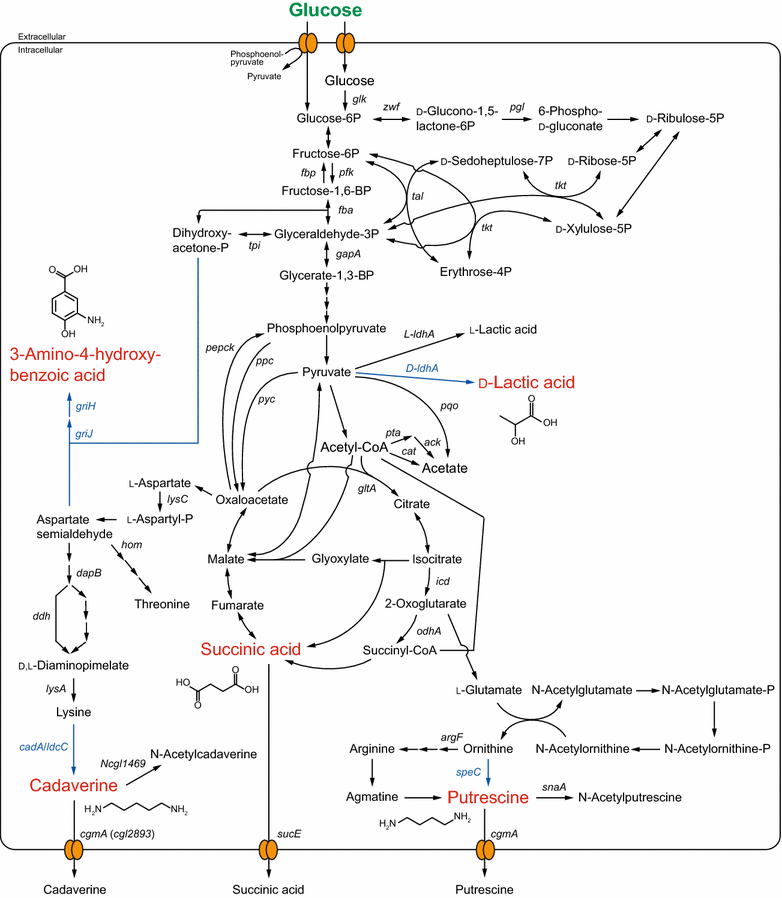Engineering cell factories for producing building block chemicals for bio-polymer synthesis
- PMID: 26794242
- PMCID: PMC4722748
- DOI: 10.1186/s12934-016-0411-0
Engineering cell factories for producing building block chemicals for bio-polymer synthesis
Abstract
Synthetic polymers are widely used in daily life. Due to increasing environmental concerns related to global warming and the depletion of oil reserves, the development of microbial-based fermentation processes for the production of polymer building block chemicals from renewable resources is desirable to replace current petroleum-based methods. To this end, strains that efficiently produce the target chemicals at high yields and productivity are needed. Recent advances in metabolic engineering have enabled the biosynthesis of polymer compounds at high yield and productivities by governing the carbon flux towards the target chemicals. Using these methods, microbial strains have been engineered to produce monomer chemicals for replacing traditional petroleum-derived aliphatic polymers. These developments also raise the possibility of microbial production of aromatic chemicals for synthesizing high-performance polymers with desirable properties, such as ultraviolet absorbance, high thermal resistance, and mechanical strength. In the present review, we summarize recent progress in metabolic engineering approaches to optimize microbial strains for producing building blocks to synthesize aliphatic and high-performance aromatic polymers.
Figures


References
-
- Feldman D. Polymer history. Des Monomers Polym. 2008;11:1–15. doi: 10.1163/156855508X292383. - DOI
Publication types
MeSH terms
Substances
LinkOut - more resources
Full Text Sources
Other Literature Sources

